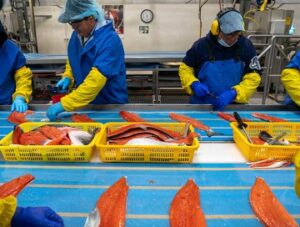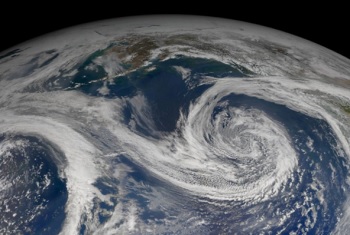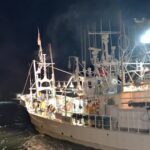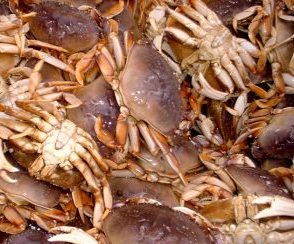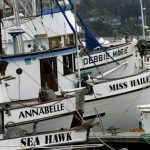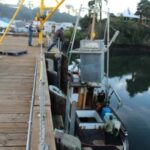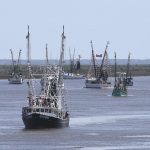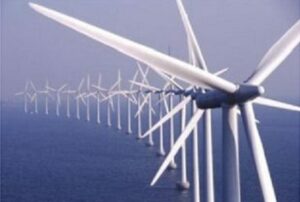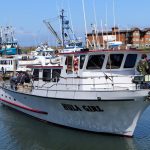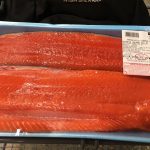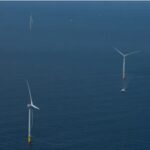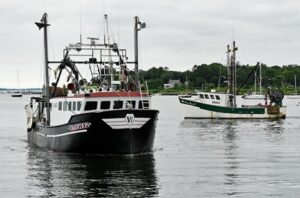Tag Archives: Pink salmon
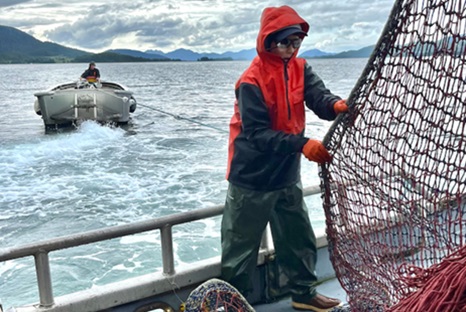
‘Huge disaster’: Historically weak pink salmon runs strain Alaska’s seine fishermen
Expectations were low this year for the pink salmon runs that power Prince William Sound’s commercial fishing industry. But no one expected them to be as bad as they’ve been. With just a few weeks left in the season, the sound’s seine fleet has harvested just one-fourth the number of pinks that it would have caught by now in a typical year. The small runs have forced 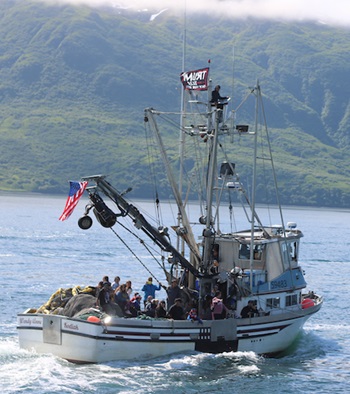 managers to close fishing for longer periods than usual. And even during openers, fishermen are reporting abysmal harvests. Some have quit early. Others are thinking about new jobs.” It is incredibly slow,” said Megan Corazza, a Homer-based seine fisherman who has fished in the sound for more than two decades. “It is the worst year I have ever seen with my own operation.” It’s a big blow to an industry already reeling from a global market crisis that sent dock prices plummeting last year. Photos, more, >>CLICK TO READ<< 09:31
managers to close fishing for longer periods than usual. And even during openers, fishermen are reporting abysmal harvests. Some have quit early. Others are thinking about new jobs.” It is incredibly slow,” said Megan Corazza, a Homer-based seine fisherman who has fished in the sound for more than two decades. “It is the worst year I have ever seen with my own operation.” It’s a big blow to an industry already reeling from a global market crisis that sent dock prices plummeting last year. Photos, more, >>CLICK TO READ<< 09:31
Bailouts
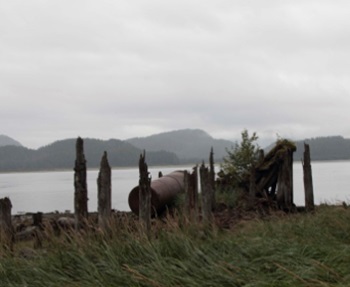 The Alaska Congressional delegation is singing praises for a new $100 million bailout of the state’s floundering commercial salmon processing business. In a joint statement from the office of Sen. Lisa Murkowski, the trio applauded the U.S. Department of Agriculture (USDA) move with the state’s senior Republican lawmaker tried to spin it as a new poverty program to provide “almost $100 million of Alaskan seafood for people experiencing food insecurity. “This purchase won’t just bolster Alaska’s seafood industry and support our coastal communities,” Murkowski was quoted as saying, “but will help bring the highest-quality and healthiest seafood products in the world to families in need. I am grateful for the USDA’s investment in our fishermen and the health of Americans.” There has been no actual “investment in our fishermen,” presuming she is talking about Alaska fishermen. But they may benefit from a deal that helps processors clean out some of their inventory before the upcoming fishing season. More, >>click to read<< 13:06
The Alaska Congressional delegation is singing praises for a new $100 million bailout of the state’s floundering commercial salmon processing business. In a joint statement from the office of Sen. Lisa Murkowski, the trio applauded the U.S. Department of Agriculture (USDA) move with the state’s senior Republican lawmaker tried to spin it as a new poverty program to provide “almost $100 million of Alaskan seafood for people experiencing food insecurity. “This purchase won’t just bolster Alaska’s seafood industry and support our coastal communities,” Murkowski was quoted as saying, “but will help bring the highest-quality and healthiest seafood products in the world to families in need. I am grateful for the USDA’s investment in our fishermen and the health of Americans.” There has been no actual “investment in our fishermen,” presuming she is talking about Alaska fishermen. But they may benefit from a deal that helps processors clean out some of their inventory before the upcoming fishing season. More, >>click to read<< 13:06
No-farm farm
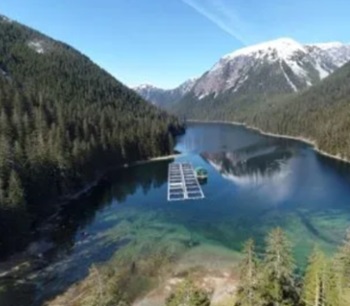 In one of the stranger twists in the strange world of global salmon marketing, Alaska’s non-farm fish farmers played a role in convincing the Canadian city of Ottawa to order removal of billboards protesting farmed salmon. The reason? “False advertising.” And now the same environmental group involved in Ottawa – Wild First – is under fire in British Columbia for running radio advertisements claiming salmon farms have pushed wild Pacific salmon to “the brink of extinction,” according to the news website Business in Vancouver (BIV). That claim is about as far from the truth as one can get. Salmon in the Pacific are today at numbers never seen in recorded history, but most of them are pink salmon. Some scientists contend this explosion of pinks due in part to the free-range fish farming efforts of hatchery operators in Alaska and Russia has reached the point where it is wreaking havoc with the entire North Pacific ecosystem. more, >>click to read<< 07:50
In one of the stranger twists in the strange world of global salmon marketing, Alaska’s non-farm fish farmers played a role in convincing the Canadian city of Ottawa to order removal of billboards protesting farmed salmon. The reason? “False advertising.” And now the same environmental group involved in Ottawa – Wild First – is under fire in British Columbia for running radio advertisements claiming salmon farms have pushed wild Pacific salmon to “the brink of extinction,” according to the news website Business in Vancouver (BIV). That claim is about as far from the truth as one can get. Salmon in the Pacific are today at numbers never seen in recorded history, but most of them are pink salmon. Some scientists contend this explosion of pinks due in part to the free-range fish farming efforts of hatchery operators in Alaska and Russia has reached the point where it is wreaking havoc with the entire North Pacific ecosystem. more, >>click to read<< 07:50
Sea change – Major study links pink salmon and ocean chaos
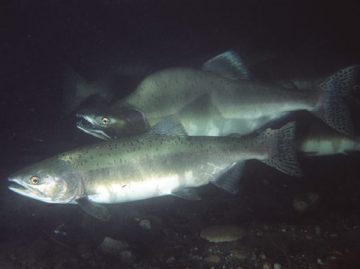 Pink salmon and the hatcheries helped boost their numbers to never-before-seen highs were Thursday singled out for disrupting the ecosystem of the North Pacific Ocean to the detriment of other species of salmon, seabirds, whales and more in a peer-reviewed study published in the journal Marine Ecology Progress Serices (MEPS). The study titled “From diatoms to killer whales: impacts of pink salmon on North Pacific ecosystems” concluded that “the evidence is consistent and strong that pink salmon can exert competitive dominance for common-pool prey resources shared by four forage fish species, all five species of Pacific salmon and steelhead trout, and 11 species of seabirds. “It further indicates that pink salmon can have a strong influence on ecosystem structure and function by, for example, initiating pelagic trophic cascades.” >>click to read<< 10:20
Pink salmon and the hatcheries helped boost their numbers to never-before-seen highs were Thursday singled out for disrupting the ecosystem of the North Pacific Ocean to the detriment of other species of salmon, seabirds, whales and more in a peer-reviewed study published in the journal Marine Ecology Progress Serices (MEPS). The study titled “From diatoms to killer whales: impacts of pink salmon on North Pacific ecosystems” concluded that “the evidence is consistent and strong that pink salmon can exert competitive dominance for common-pool prey resources shared by four forage fish species, all five species of Pacific salmon and steelhead trout, and 11 species of seabirds. “It further indicates that pink salmon can have a strong influence on ecosystem structure and function by, for example, initiating pelagic trophic cascades.” >>click to read<< 10:20
Warming bonus
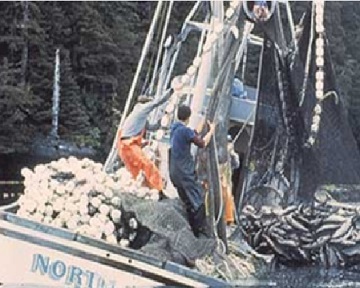 A warmer ocean continues to smile on Alaska commercial salmon fishermen, but the fish market is sadly another story. The 49th state these days finds itself vying with Russia to become the world’s biggest supplier of cheap salmon to stuff into cans and pouches while upscale consumers spend their money on nice, fat salmon filets. Norwegian salmon farmers – Leroy, Mowi and others who specialize in six-and-a-half to 13-pound Atlanatic – are posting record profits and worry about being taxed by the Norwegian government the way Alaska taxes oil, and Alaska fishermen are waiting to find out just how low the final price for the bulk of their catch, pink salmon that have in recent years averaged 3.4 pounds, according to Alaska Department of Fish and Game data. >>click to read<<
A warmer ocean continues to smile on Alaska commercial salmon fishermen, but the fish market is sadly another story. The 49th state these days finds itself vying with Russia to become the world’s biggest supplier of cheap salmon to stuff into cans and pouches while upscale consumers spend their money on nice, fat salmon filets. Norwegian salmon farmers – Leroy, Mowi and others who specialize in six-and-a-half to 13-pound Atlanatic – are posting record profits and worry about being taxed by the Norwegian government the way Alaska taxes oil, and Alaska fishermen are waiting to find out just how low the final price for the bulk of their catch, pink salmon that have in recent years averaged 3.4 pounds, according to Alaska Department of Fish and Game data. >>click to read<<
. >>click to read<< 11:55
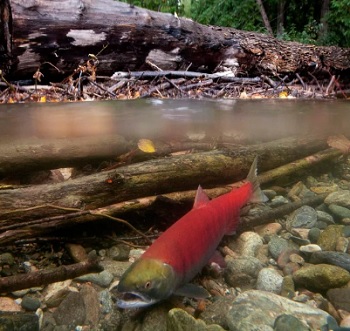
Commercial fishers and wild salmon advocates celebrate large returns to B.C. waters
Mitch Dudoward has worked in the salmon industry for more than 40 years and says fishing on the Skeena River in northwest B.C. has never been better. “This is the best season I can recall in my lifetime with the numbers we are catching,” said Dudoward, who recently completed a big sockeye haul aboard his gillnetter Irenda. Meanwhile, Bob Chamberlin, chairman of the First Nations Wild Salmon Alliance, said thousands of pink salmon are in Central Coast rivers after years of minimal returns. The strong run comes two years after the closure of two open-net Atlantic salmon farms in the area. “We got them removed and two years later we went from 200 fish in the river to where we have several thousand to date. In our mind and knowledge that is a really clear indicator.” >click to read< 10:41

All eyes on Bristol Bay after state predicts a record season, but fishery’s economics still in flux
The summer salmon season is due to ramp up in Alaska over the next few months, and the main focus of this year’s salmon fishery statewide will be on Bristol Bay sockeye. Of the 160.6 million salmon of all species that the Alaska Department of Fish and Game forecasts will be harvested in 2022, 74 million of those are sockeye and about three-quarters of those would come from Bristol Bay. Another 67.2 million are pink salmon, with the rest made up of smaller numbers of the other three species. If the forecast proves accurate, this will be the biggest year ever for the Bristol Bay fishery. > click to read < 14:15

Humpy harvest pushes Prince William Sound catch to 39.8M
Purse seine fishing for pink salmon continues in earnest in Prince William Sound, with the humpy catch alone through Wednesday, Aug. 11 reaching nearly 36 million fish and an overall commercial salmon harvest at 39.8 million fish. That’s up from 31.9 million pinks and an overall Prince William Sound harvest of 35.7 million fish as of a week earlier. Alaska Department of Fish and Game officials noted that the purse seine fishery in the eastern section of Prince William Sound alone had harvested over 21 million humpies, while in the northern section the humpy catch was 4.9 million fish. >click to read<08:49
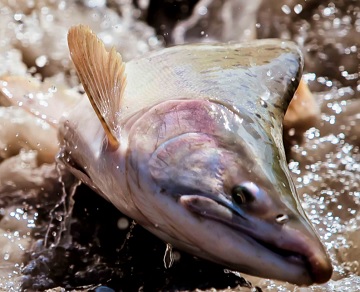
Invasive pink salmon populations are increasing throughout native Atlantic salmon waters
Fisheries biologists have been wringing their hands for decades in cold-water regions of the Pacific Ocean due to the proliferation of farmed Atlantic salmon and the threats they pose to native fish and the health of inshore waters, both in North America off the coasts of the U.S. and Canada, and in South America, where salmon farms are common off the coast of Chile. The threats are real, and there are lots of them,,, But, until recently, the presence of Pacific salmon in the North Atlantic hasn’t moved the “environmental disaster” needle much. That’s changing, thanks to an invasive Pacific salmon that is showing up in larger numbers in traditional Atlantic salmon rivers in Scandinavia, as far south as the British Isles and even to the east coast of Canada. The culprit in question is pink salmon, the smallest and most numerous of the Pacific salmon family. >click to read< 13:20
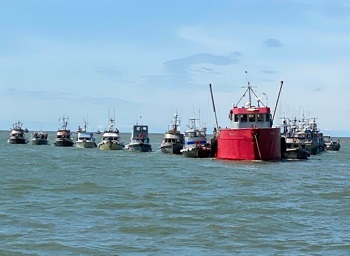
2020 commercial salmon catch, and value took a dive
Commercial salmon harvests proved challenging for the 2020 season, challenged by a global pandemic of the novel coronavirus, with the overall fish catch and its value down considerably from a year earlier. Data released on Monday, Nov. 9 by the Alaska Department of Fish and Game, said the all species harvest has an approximate value of $295.2 million, down 56 percent from $673.4 million in 2019. Fishermen delivered some 116.8 million fish, a 44 percent drop from the 208.3 harvested a year earlier, the report said. >click to read< 18:15
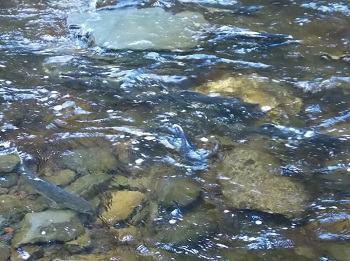
Southeast Alaska pink salmon catch could be lowest in 44 years
Two years ago the commercial catch of pink salmon in Southeast Alaska hit its lowest level in more than four decades. This year’s catch will be even lower. Andy Piston is the department’s pink and chum salmon project leader for Southeast. He said the catch by late August had topped six million fish and is expected to finish around seven million pinks by the end of the season. “It looks like it’s going to come in a little below the 2018 parent year harvest which was about 8.1 million and that’ll be, it’ll be one of the lowest harvests since the mid-1970s. >click to read< 09:36
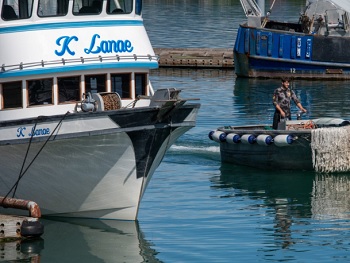
Humpy harvest in PWS surges to exceed 12M fish
Harvests of over 9 million pink salmon over the past week have pushed Alaska’s yearly total to over 25 million fish, including upwards of 12 million humpies caught in Prince William Sound. Alaska Department of Fish and Game finfish area management biologists in Cordova said the cumulative pink salmon harvest in the Sound through Aug. 1 alone was estimated at 10.5 million common property fish and 1.5 cost recovery fish. Preliminary commercial salmon harvest data compiled by ADF&G through Tuesday, Aug. 4, put the total commercial salmon harvest in Prince William Sound at 11.2 million fish, including 12.3 million pink, 1.9 million chum, 902,000 sockeye, 4,000 coho and 4,000 king salmon. >click to read< 19:03

Humpy catch on the rise – ADF&G data shows PWS salmon harvest at over 9.4M fish
An estimated 800,000 were harvested in Prince William Sound on Sunday, July 19, boosting the cumulative pink salmon harvest to an estimated 5.6 million common property fish, and the overall estimated commercial catch for the fishery to 9.4 million salmon. Still fishery managers in the Cordova office of the Alaska Department of Fish and Game said that the Valdez Fisheries Development Association needs some 409,000 humpies for brood stock and has recommended a closure within Port Valdez. >click to read< 09:57
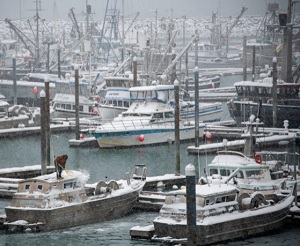
Humpy run into Price William Sound forecast is above average
Forecasts for the 2020 fishing season show a robust run of pink and chum salmon into Price William Sound, along with a healthy run of kings and below average return of wild and hatchery salmon to the Copper River. The area forecast released by the Alaska Department of Fish and Game on Tuesday, Jan. 28, also put wild sockeye returns to Coghill Lake at slightly below average. >click to read< 09:20
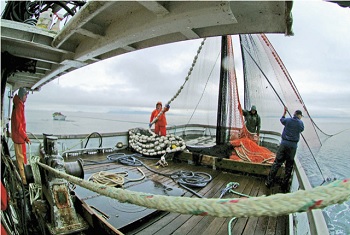
FISH FACTOR: First checks finally set for 2016 pink salmon disaster
It’s been a long time coming but payments should soon be in hand for Alaska fishermen, processors and coastal communities hurt by the 2016 pink salmon run failure, the worst in 40 years. Congress OK’d more than $56 million in federal relief in 2017, but the authorization to cut the money loose languished on NOAA desks in D.C. for more than two years. The payouts got delayed again last October,,, >click to read< 17:18
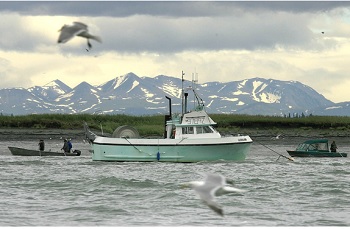
Opposite forecasts for SE pinks, Bristol Bay reds; Cook Inlet busts
Biologists are forecasting another weak pink salmon year for Southeast and another strong sockeye salmon run for Bristol Bay coming in the 2020 season. The forecasts for Southeast Alaska and for Bristol Bay, released in late November, continue the trends of the past few years in both areas. In Southeast, biologists are forecasting about 12 million fish to be harvested, with a range of 7 million to 19 million fish. >click to read< 11:51
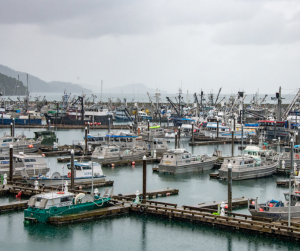
Pink salmon disaster relief payments delayed
Federal relief payments to permit holders who participated in the disastrous 2016 Gulf of Alaska pink salmon fishery have hit another snag, and now won’t be forthcoming until March. News of the payment delay, which was slated to be within six to eight weeks of the Oct. 31 deadline for skipper applications for relief reached Rep. Louise Stutes, R-Kodiak, on Nov. 15. >click to read< 17:14

Hundreds of spawning salmon killed in Squamish river; BC Hydro admits responsibility
Biologist Chessy Knight, who captured photos of the dead fish on Sept. 20, estimates about 300 fish were killed when the water levels in the Cheakamus River fell by about half over the course of a day. The pink salmon were trapped in shallow pools and couldn’t return to deeper, flowing sections of the river. “This has been happening for many, many years on the Cheakamus,” said Knight, who’s also president of the Squamish River Watershed Society. “But this is the first time that we saw adult spawners also affected by these flow manipulations.” >click to read< 17:59
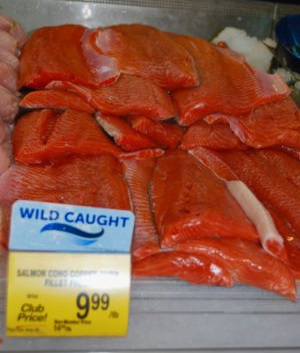
Prince William Sound humpy harvest late, compressed but strong
Commercial harvests of humpies in Prince William Sound rose to over 34 million fish through Tuesday, Aug. 20, up nearly 12 million fish in seven days, while the overall salmon harvest for the Sound rose from 30.5 million to nearly 42 million for the same period. Still the pink salmon harvest remains late and compressed for wild stocks and the Prince William Sound Aquaculture Corp. run, said Charlie Russell, seine area management biologist for the Alaska Department of Fish and Game in Cordova. “The most likely culprit is the record heat wave and drought conditions that have affected much of Alaska,” >click to read< 12:39
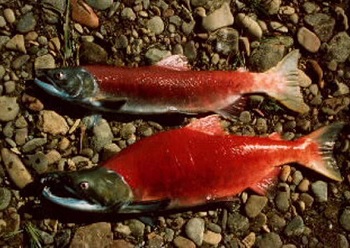
Historic Alaska heatwave is killing off thousands of salmon
Unusually warm temperatures across Alaska this summer has led to die-offs of unspawned chum, sockeye and pink salmon, with the warm waters acting as a “thermal block,” basically a wall of heat salmon don’t swim past, delaying upriver migration.,,, “Cook Inletkeeper has been tracking stream temperatures in non-glacial systems across the Cook Inlet watershed since 2002. But this is a first – we’ve never seen stream temperatures above 76 degrees Fahrenheit,” wrote Mauger. “Physiologically, the fish can’t get oxygen moving through their bellies,”,,, >click to read< 09:46
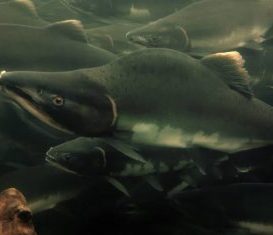
Prince William Sound Pink salmon fishery back in business
Pink salmon commercial harvests are still below forecasts, but even with no prospect of rain predicted so far until Aug. 22, the catch in Prince William Sound rose from 17.6 million to 22.2 million within the past week. Preliminary harvest figures posted by the Alaska Department of Fish and Game showed that 22,904,000 pinks comprised the bulk of the overall Prince William Sound harvest as of Aug. 14. The rest of the overall catch to date of 30.5 million fish in the Sound’s commercial harvest includes 5,026,000 chum, 2,526,000 sockeyes, 18,000 Chinook and 15,000 coho salmon. >click to read< 13:13
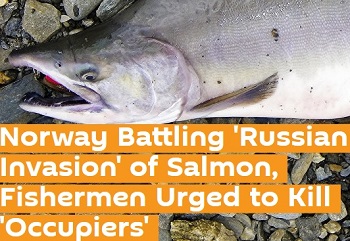
Norway Battling ‘Russian Invasion’ of Salmon, Fishermen Urged to Kill ‘Occupiers’
Norway is facing an invasion of humpback salmon, informally known as “Russian salmon”, Norwegian researchers have warned. According to them, the intrusion is gaining momentum, and Norway is yet to see the worst of it. According to locals and researchers alike, the much-dreaded “invasion” may turn into a prolonged “occupation”. Elevated populations of the humpback salmon, which is the invader’s official name,,, >click to read< 20:40
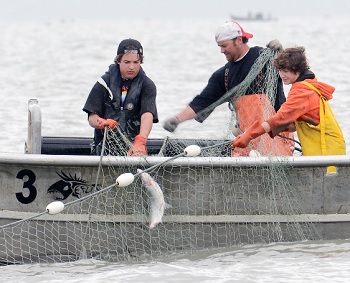
Cook Inlet salmon fisheries into full swing after rough 2018
Upper Cook Inlet salmon fisheries are now in full swing, with promising sockeye returns finally showing up. East Side setnetters in the sections north of Kasilof opened for their first period July 8, and the personal-use dipnet fishery on the Kenai River opened July 10. They join the drift gillnet fleet and other Upper Cook Inlet setnetters as well as the inriver sportfishery and the Kasilof River personal-use fishery. As of July 8, nearly 80,000 sockeye salmon had passed the sonar in the Kenai River. That’s more than double the number that had passed through on the previous date in 2018, when only 37,513 had passed, according to the Alaska Departm,,, >click to read< 15:31
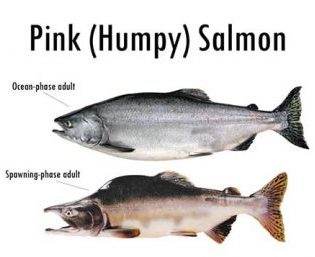
‘Unheard of’ flood of pinks surprises at Alaska Peninsula
The biggest fish story for Alaska’s salmon season so far is the early plug of pinks at the South Alaska Peninsula. By June 28, more than 8 million pink salmon were taken there out of a statewide catch of just more than 8.5 million. Previously, a catch of 2.5 million pinks at the South Peninsula in 2016 was the record for June and last year’s catch was just 1.7 million Managers at the Alaska Department of Fish and Game at Sand Point said at this pace, this month’s catch could near 10 million pinks. By Laine Welch, >click to read< 11:53
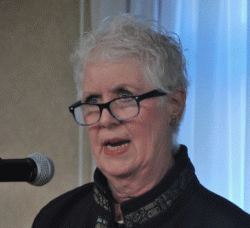
Promising news on pink salmon disaster relief funds
Dear Friends and Neighbors, As the season is either underway or close at hand for many of you, I wanted to provide a short update about where we are with the 2016 pink salmon disaster relief funding. I believe we have some promising news. Thanks in part to outreach from people like yourselves, Sen. Lisa Murkowski’s office has been putting a lot of pressure on the federal level to expedite the release of the grant funding. It appears to be having some effect. As I write this, it is Tuesday, May 28, according to new information, NOAA is aiming to release the grant funding to the Pacific States Marine Fisheries Commission (PSMFC) by this upcoming Saturday, June 1. Rep. Louise Stutes >click to read<19:37

Southeast pink salmon forecast cause for concern
As the days grow longer and summer plans start to materialize, 18 million is a number on the mind of many across Southeast Alaska, especially those in numerous industries that rely on salmon fishing. Eighteen million is the number of pink salmon the Southeast forecast shows could be harvested in the 2019 commercial fishing season.,, “Salmon is the biggest portion of my income for sure,” said Stan Savland, commercial fisherman out of Hoonah and 20-year seiner. “The forecast is very alarming. I’m worried about this season because our recent odd year cycles are really what’s been carrying the seine fleet to make it.” >click to read<13:00
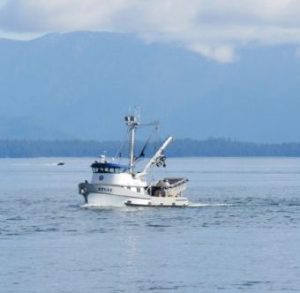
Southeast pink salmon catch lowest in over four decades
Southeast Alaska’s commercial pink salmon catch will wind up way below forecasts, the lowest harvest in more than four decades. The Alaska Department of Fish and Game’s pink and chum salmon project leader for Southeast Andy Piston said the region’s commercial catch this summer is 7.3 million fish. “And that would be the lowest region-wide harvest since 1976,” Piston said. “And our Southeast purse seine catch, and that’s the gear group that catches most of our pink salmon, is about 6.5 million which again is the lowest we’ve seen since the mid-1970s.” It’s not the lowest catch ever. >click to read<14:57
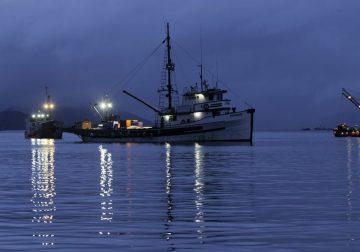
Alaska’s 2018 commercial salmon harvest 30 percent below forecast, yet some fisheries have boomed
The statewide commercial salmon harvest is about 31 percent below the preseason forecast, the Alaska Department of Fish and Game said in a statement Thursday. The 2018 season, it said, “has been unusual.” Preliminary numbers show a statewide commercial salmon harvest of about 103 million fish so far. That’s subject to change, because the fishing season isn’t completely over yet. Fish and Game’s forecast in March projected a total statewide harvest of 147 million fish. >click to read<08:03






